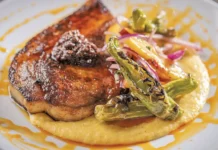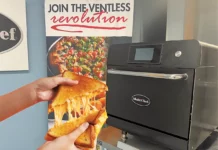The need for formal safety training for restaurant employees upon being hired is on the rise. There are many safety concerns in any restaurant that are prevalent in order to prevent injuries and accidents from occurring. Some of the most expensive workers’ compensation claims at restaurants occur from a number of factors that can easily be mitigated and prevented.

For restaurateurs that have high deductible insurance programs, the direct costs are reflected immediately when you pay for the loss. For large losses that surpass the deductible, the claim history will drive up pricing for the insurance policy at renewal, similar to how a guaranteed cost program works. Even in a guaranteed cost program (where your insurance company pays first dollar); a poor loss history will cause your premiums to increase substantially and potentially be dropped by your insurance carrier.
Slip, trip and fall hazards are one of the leading causes of workplace injuries and can be extremely costly. Investing in employee education on preventing slip, trip and fall hazards and ingraining safety best practices into your workplace’s culture can lead to substantial long-term cost savings.
Whether a fall is caused by spillage of ice, water or other liquids or outside in the parking lot while a customer is getting out of their vehicle, there are a few ways businesses can protect their employees and business associate from this workplace injury:
Maintain your physical worksite
Make sure your worksites are maintained in a clean and orderly fashion, including preventive maintenance of flooring materials. Have a plan in place so there is a method to inspect and monitor slip and trip hazards. Designate a team or individual responsible for doing a periodic inspection. Designing your space and processes to prevent potential exposure to hazards will keep your employees safe while reducing your potential liability and costs. Your business should:
- Contain work processes to prevent discharge, splatter or spillage of liquids, oils, particles or dust onto the floor.
- Use drip trays to contain leaks of lubricant from machinery and perform regularly scheduled maintenance.
- Use adequate ventilation to avoid smoke, steam and condensation of water and grease.
- Provide adequate lighting to keep work areas, aisles, stairwells and other paths of travel well-lit.
- Make sure stairs have sufficient hand rails.
- Provide effective drainage and work platforms.
- Install slip-resistant floors in high risk areas.
Assess high-risk areas
Conducting proactive and regular assessments of high-risk areas is an effective preventive measure. The areas that should be assessed regularly include:
- Transition areas
- Building entrances
- Doorways
- Parking lots
- Common areas
- Maintain Mats and Runners
- When it comes to mats and runners, attention to detail can reduce accidents.
- Select the appropriate mat based on location and performance needs. For example, a kitchen may require a different mat than an entranceway.
- Limit the difference in height between floor surfaces and mats to no more than ¼ to ½ an inch.
- Inspect mats and runners so they are not curled.
- Inspect regularly for deterioration or build-up of contaminants.
Establish a footwear program
Designate safety footwear for your wait-staff and other employees. Establishing an official program where employers share in the cost of the footwear or purchase them for employees will ensure compliance.
It is also strongly encouraged that restaurateurs conduct and document formal safety self-inspections by managers with employees. Safety education plays a large role in injury prevention. Training typically can be done in pre-shift meetings and supplemented with online safety training. The key is to engage managers and employees to improve safety in the restaurant with the same diligence of customer service, quality and cost.
Implementing established practices will help to build a stronger safety culture in your organization, and reduce your total cost of risk through fewer injuries and lower insurance rates. Contact your broker to help you develop and implement a comprehensive risk management program for your restaurant.























